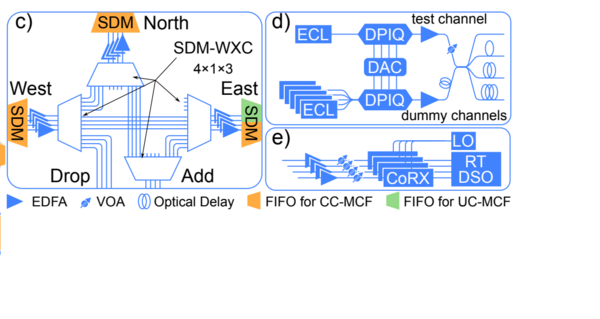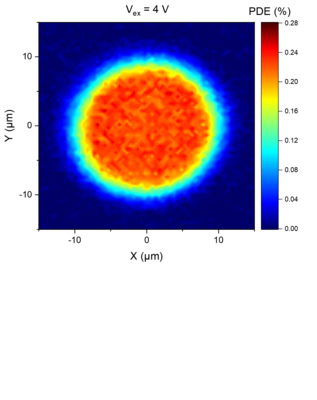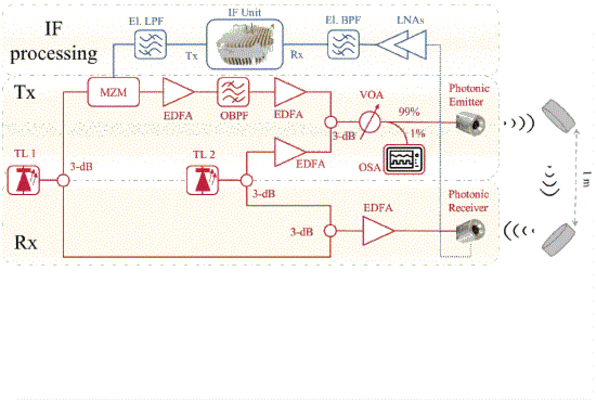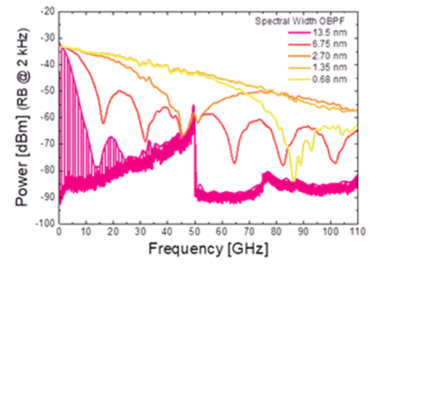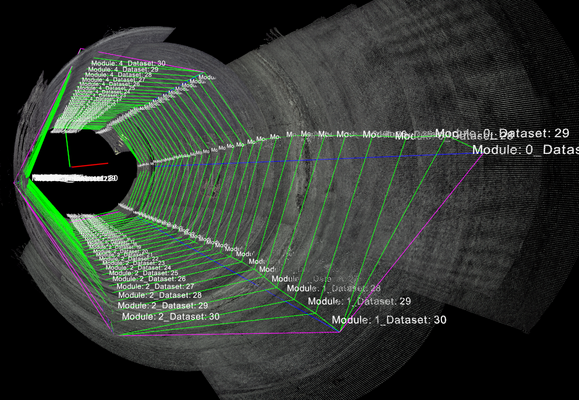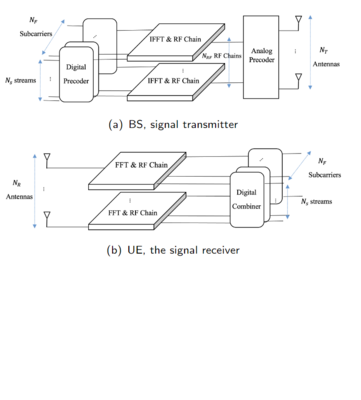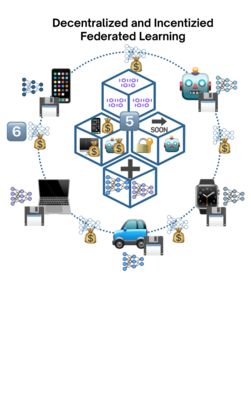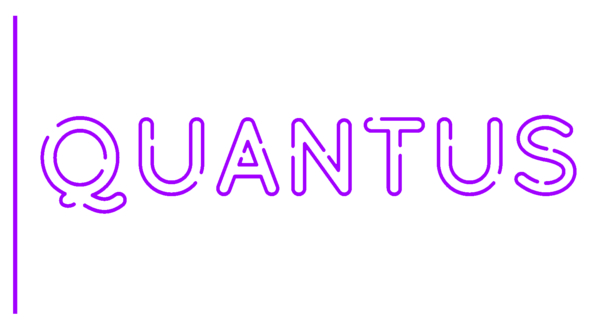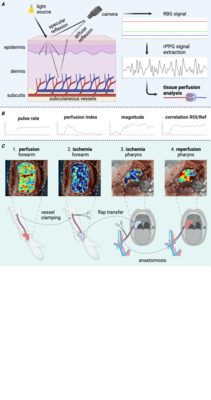Colorless and Directionless ROADM for Meshed Coupled-Core Multicore Fiber Networks
Researchers from NICT, University of L’Aquila, Finisar and Sumitomo demonstrate the first meshed spatial-super-channel switching SDM network using field-deployed coupled-core multicore fibers with a 3 line-side, colorless, directionless ROADM....
Guard-ring free InGaAs/InP single photon avalanche diodes for C-band quantum communication
We present a guard-ring free InGaAs/InP single photon avalanche diode with 20 µm diameter for the optical C-band. At 225 K, 25.6 µs dead time and 17% detection efficiency, the dark count rate is 3 kcps with 0.5% afterpulsing probability. This...
Real-Time Sub-THz Link Enabled Purely by Optoelectronics: 90–310 GHz Seamless Operation
A photonics-enabled sub-THz wireless link operating in real-time settings, using a PIN-PD-based THz emitter, and a THz receiver based on an ultra-fast photoconductor is demonstrated. The real-time generation and detection of the information...
Microwave Photonic ps-Pulse and 140 GHz RF Comb Generator
A microwave photonic RF comb generator is presented by combining an fs-pulse laser and a high-speed broadband photodetector module. The subsystem generates pulses with a FWHM of 5.8 ps and a flat RF comb up to 140 GHz. Furthermore, the...
System for 3D Acquisition and 3D Reconstruction Using Structured Light for Sewer Line Inspection
We introduce an innovative system based on single-shot structured light modules that facilitates the detection and classification of spatial defects like jutting intrusions, spallings, or misaligned joints. This system creates highly accurate 3D...
MIMO Systems with Reconfigurable Antennas: Joint Channel Estimation and Mode Selection
In this paper, we develop a low-complexity iterative mode selection algorithm for data transmission in a Reconfigurable antennas (RAs) MIMO system. Furthermore, we study channel estimation of an RA multi-user MIMO system. We propose a mode...
Decentral and Incentivized Federated Learning Frameworks: A Systematic Literature Review
The advent of federated learning (FL) has sparked a new paradigm of parallel and confidential decentralized machine learning (ML) with the potential of utilizing the computational power of a vast number of Internet of Things (IoT), mobile, and...
Quantus: An Explainable AI Toolkit for Responsible Evaluation of Neural Network Explanations and Beyond
Explainability is supposed to strengthen trust in artificial intelligence, it is necessary to systematically review and compare explanation methods in order to confirm their correctness. We therefore built Quantus—a comprehensive, evaluation...
Enabling Optical Modulation Format Identification Using an Integrated Photonic Reservoir and a Digital Multiclass Classifier
We numerically show modulation format identification in the optical domain using Silicon-on-Insulator-based Photonic-Integrated-Circuit (PIC) reservoir. Identification of 32 GBd single-polarization signals of OOK, PAM4, BPSK and QPSK is...
Continuous intraoperative perfusion monitoring of free microvascular anastomosed fasciocutaneous flaps using remote photoplethysmography
Intraoperative monitoring of free flaps using remote photoplethysmography (rPPG) signal provides objective and reproducible data on tissue perfusion. We developed a monitoring algorithm for flap perfusion, which was evaluated in fifteen patients...
